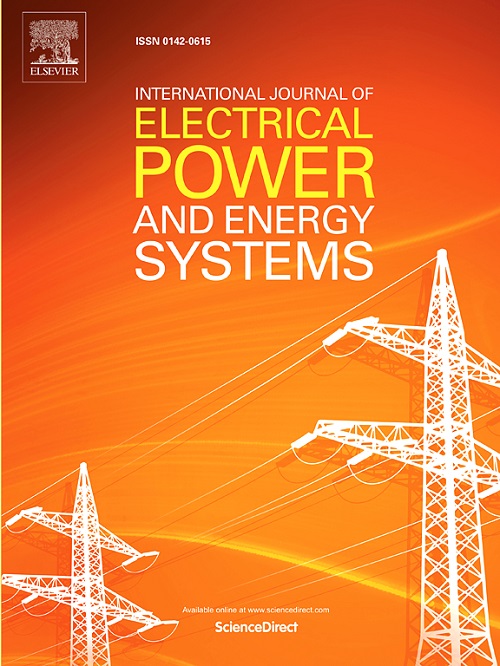Distributed coordinated control for voltage regulation in active distribution networks based on robust model predictive control
IF 5
2区 工程技术
Q1 ENGINEERING, ELECTRICAL & ELECTRONIC
International Journal of Electrical Power & Energy Systems
Pub Date : 2025-02-18
DOI:10.1016/j.ijepes.2025.110529
引用次数: 0
Abstract
As the integration of renewable energy sources increases, the uncertainty of wind power and photovoltaics bring new challenges to the voltage control problem of active distribution networks (ADNs). To address these challenges, this paper proposes a double-time-scale distributed voltage control strategy for ADNs based on robust model predictive control (RMPC), which considers the coordination between multiple voltage regulation devices. In the slow-time-scale control (STC), on-load Tap changers (OLTC), step voltage regulators (SVR), and capacitor banks (CBs) are optimized to minimize long-term voltage deviations and reduce tap operations of these traditional regulation devices. On this basis, in the fast-time-scale control (FTC), the active and reactive power outputs of distributed generators (DGs) are further optimized based on RMPC to regulate the fast voltage fluctuations while considering the uncertainty of DG outputs. The RMPC model is formulated as a minimum–maximum convex optimization problem, which is transformed into a quadratic programming problem. Moreover, by equivalently processing of adjacent control areas in ADNs, the distribution network model established based on voltage sensitivity method is decomposed to accelerate the solving process. The effectiveness of the proposed double-time-scale distributed RMPC voltage control scheme has been verified in a modified Italia 54-bus system. Results demonstrate that, compared to conventional deterministic centralized control, the proposed scheme achieves 63% reduction for the maximum voltage deviation.
求助全文
约1分钟内获得全文
求助全文
来源期刊
CiteScore
12.10
自引率
17.30%
发文量
1022
审稿时长
51 days
期刊介绍:
The journal covers theoretical developments in electrical power and energy systems and their applications. The coverage embraces: generation and network planning; reliability; long and short term operation; expert systems; neural networks; object oriented systems; system control centres; database and information systems; stock and parameter estimation; system security and adequacy; network theory, modelling and computation; small and large system dynamics; dynamic model identification; on-line control including load and switching control; protection; distribution systems; energy economics; impact of non-conventional systems; and man-machine interfaces.
As well as original research papers, the journal publishes short contributions, book reviews and conference reports. All papers are peer-reviewed by at least two referees.

 求助内容:
求助内容: 应助结果提醒方式:
应助结果提醒方式:


